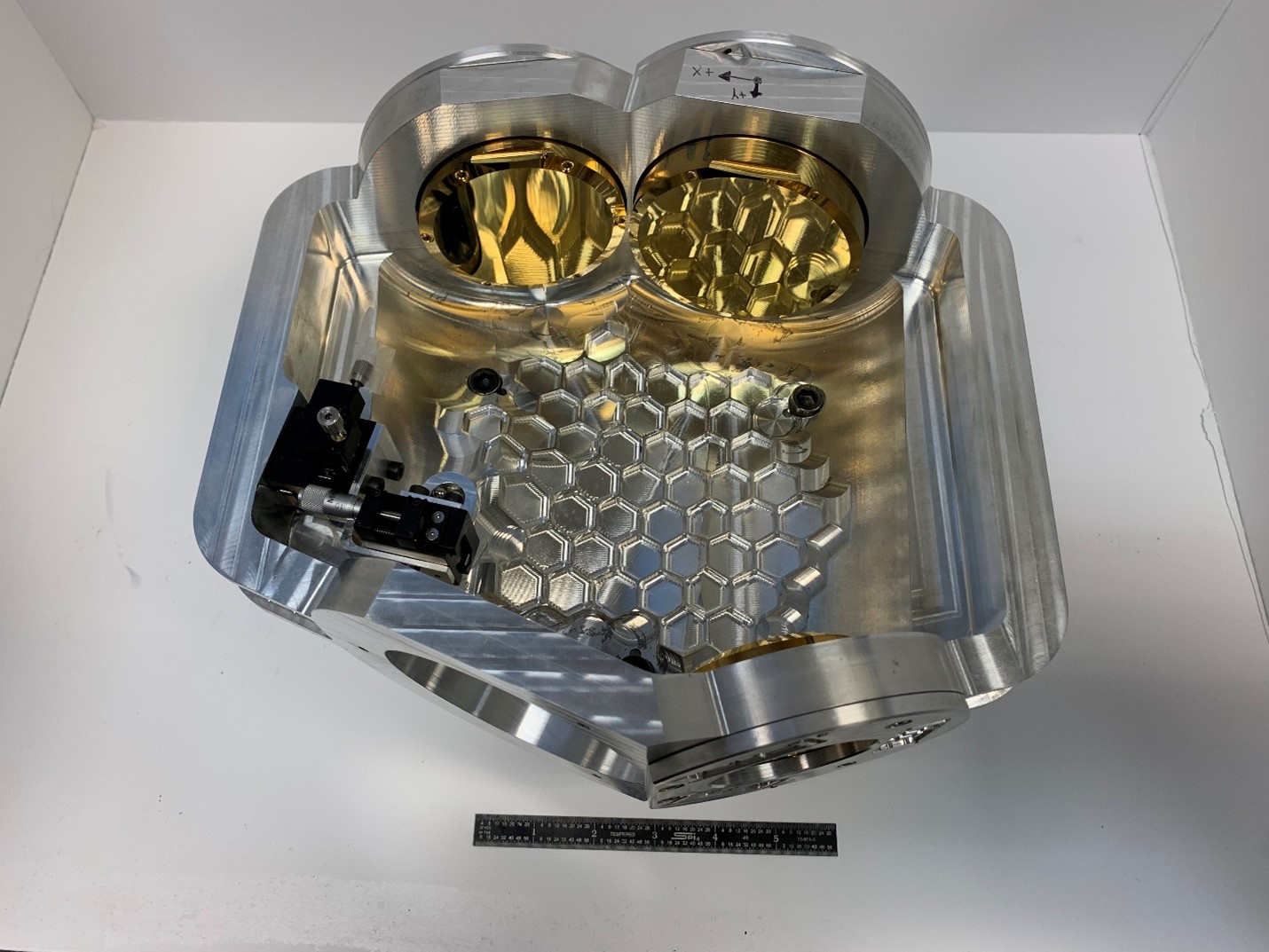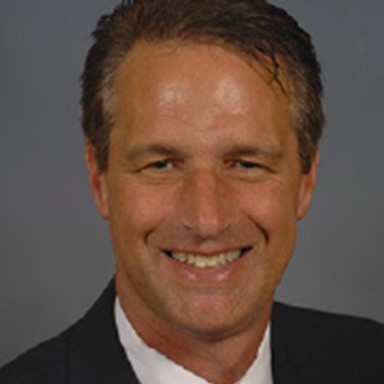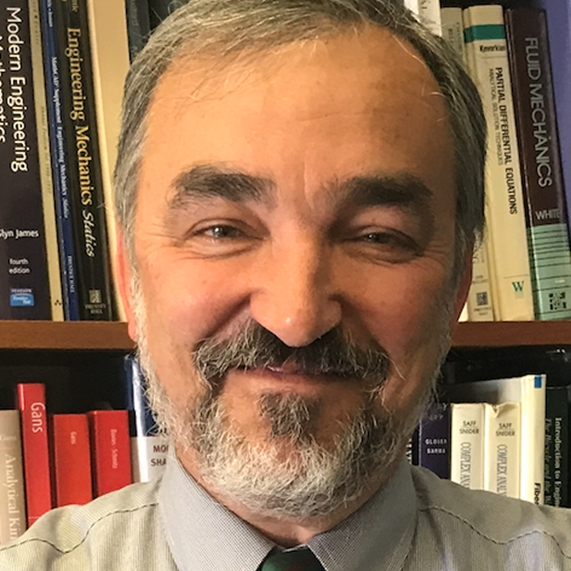About This Webinar
Part 2 of the 2021 Freeform Optics Series
Freeform optics can be manufactured by ultraprecision machining processes such as multi-axis diamond turning, diamond milling, and diamond grinding. Along with computational optical design, multi-degree-of-freedom manufacturing operations and associated equipment have been a driving force behind the development of freeform optics, a disruptive technology in the optics industry.
Freeform optics allow the nearly arbitrary redirection of light in three dimensions, and therefore many axisymmetric designs can be replaced with freeform designs having improved performance or drastically reduced size and part count. Sometimes entirely new optical functions can be realized. However, freeform optics pose significant challenges for manufacturing and metrology.
Among the challenges is the effect of subaperture manufacturing methods on figure, roughness, and surface integrity, including subsurface damage or residual stresses. In this talk Matt Davies, Ph.D., of UNC Charlotte, and John Lambropoulos, Ph.D., of the University of Rochester, discuss the current methods employed for manufacturing freeform optics, as well as those methods’ comparative strengths and limitations. In particular, they examine the need for post-processing (finishing) and its interactions with other manufacturing steps and methods.
The presenters give specific examples ranging from the effect of surface integrity on a freeform all-reflective imaging system to the effects of subsurface damage on transmissive infrared optics.
To read more about the work behind this webinar series, you can access the group's latest paper, "Freeform optics for imaging," published by the Optical Society (OSA).
Part 1: "Freeform Optics for Imaging: Design Methods"
Part 3: "Freeform Optics for Imaging: Mid-Spatial Frequency Errors"

Miniature three-mirror snap-together freeform anastigmat (Freeform TMA). The optics were manufactured by the methods described in the presentation. A six-inch scale is shown for reference.
Who should attend:
Optical designers, engineers, those involved in the manufacture of optical systems, those involved in precision technologies, and anyone who is interested in current methods for freeform optics manufacturing. Freeform optics encompasses a range of disciplines and industries, including transportation, semiconductor, displays, lighting, IR and defense, photovoltaics, remote sensing, and even quantum optics.
About the presenters:
 Matt Davies, Ph.D., is professor of mechanical engineering and engineering science, former site director of the Center for Freeform Optics (https://centerfreeformoptics.org/), and a member of the Center for Precision Metrology at UNC Charlotte. He has nearly 30 years of experience in precision engineering and manufacturing science, and 15 years of experience in the precision manufacturing of freeform optics. Davies earned a doctorate in aerospace engineering from Cornell University and then joined the NIST Manufacturing Engineering Laboratory, where he worked on many projects in precision engineering, precision manufacturing, and metrology. He is co-author of the textbook System Dynamics for Mechanical Engineers and was awarded the Bank of America Award for Teaching Excellence in 2015. He is a fellow of the Fannie and John Hertz Foundation and a fellow of the International Academy for Production Engineering Research (CIRP).
Matt Davies, Ph.D., is professor of mechanical engineering and engineering science, former site director of the Center for Freeform Optics (https://centerfreeformoptics.org/), and a member of the Center for Precision Metrology at UNC Charlotte. He has nearly 30 years of experience in precision engineering and manufacturing science, and 15 years of experience in the precision manufacturing of freeform optics. Davies earned a doctorate in aerospace engineering from Cornell University and then joined the NIST Manufacturing Engineering Laboratory, where he worked on many projects in precision engineering, precision manufacturing, and metrology. He is co-author of the textbook System Dynamics for Mechanical Engineers and was awarded the Bank of America Award for Teaching Excellence in 2015. He is a fellow of the Fannie and John Hertz Foundation and a fellow of the International Academy for Production Engineering Research (CIRP).
 John Lambropoulos, Ph.D., is professor of mechanical engineering and of materials science at the University of Rochester, with a parallel appointment as senior scientist at the Laboratory for Laser Energetics. Following undergraduate studies at Brown University, he received his doctorate from Harvard University in the Division of Applied Sciences. He then joined the University of Rochester where, most recently, he has served as department chair from 1995 to 2001 and 2007 to 2019. His research interests are in optomechanics, optical manufacturing, and the failure of brittle materials. He has received the Presidential Young Investigator Award from President Ronald Reagan and many teaching awards from Harvard University and the University of Rochester. He was involved with the Center for Optics Manufacturing in the 1990s and most recently serves as associate director of the NSF Center for Freeform Optics at Rochester. Lambropoulos is a professional grassroots soccer referee, officiating upward of 100 soccer matches every year at the youth, adult, and high school levels.
John Lambropoulos, Ph.D., is professor of mechanical engineering and of materials science at the University of Rochester, with a parallel appointment as senior scientist at the Laboratory for Laser Energetics. Following undergraduate studies at Brown University, he received his doctorate from Harvard University in the Division of Applied Sciences. He then joined the University of Rochester where, most recently, he has served as department chair from 1995 to 2001 and 2007 to 2019. His research interests are in optomechanics, optical manufacturing, and the failure of brittle materials. He has received the Presidential Young Investigator Award from President Ronald Reagan and many teaching awards from Harvard University and the University of Rochester. He was involved with the Center for Optics Manufacturing in the 1990s and most recently serves as associate director of the NSF Center for Freeform Optics at Rochester. Lambropoulos is a professional grassroots soccer referee, officiating upward of 100 soccer matches every year at the youth, adult, and high school levels.